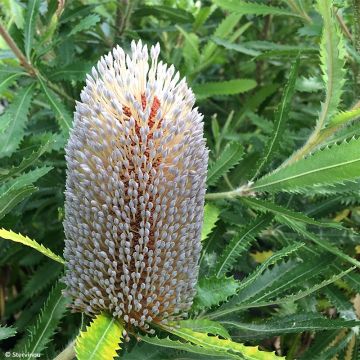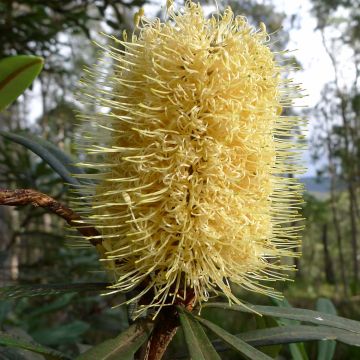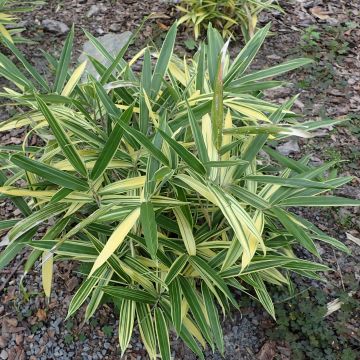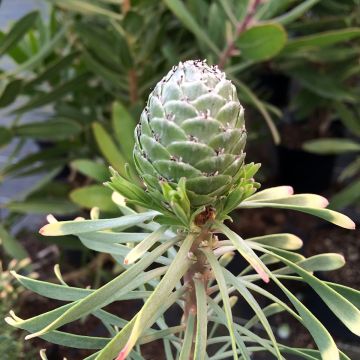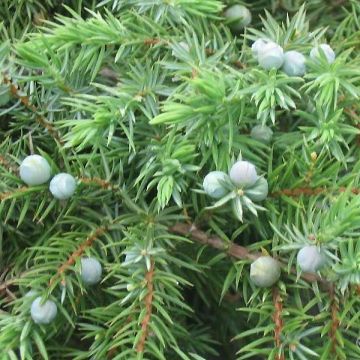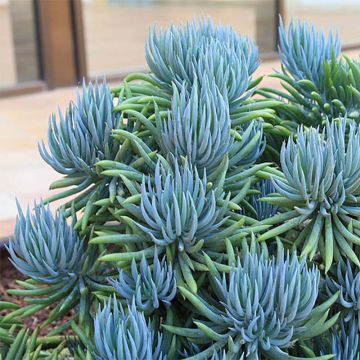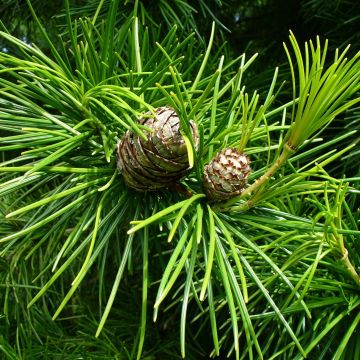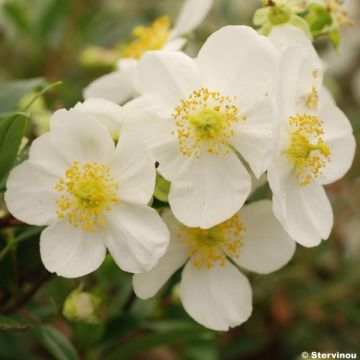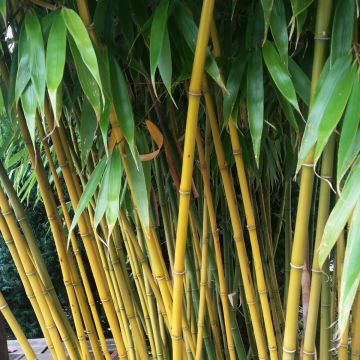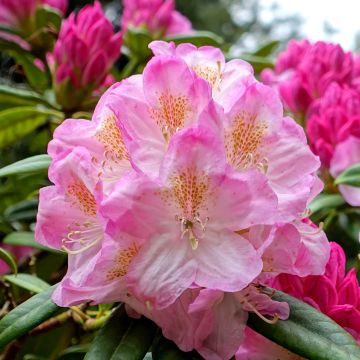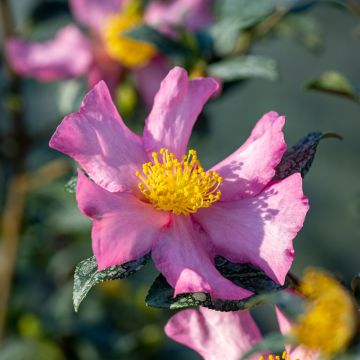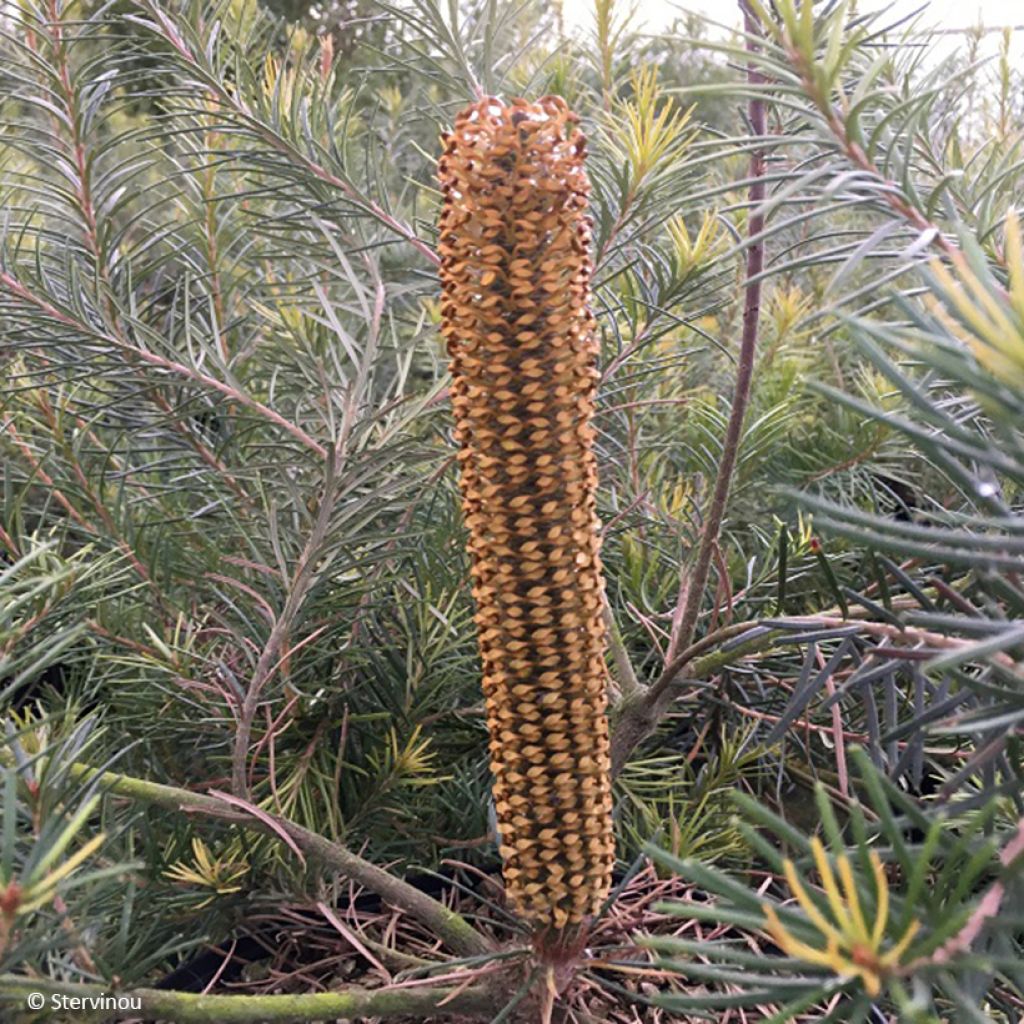

Banksia Giant Candles
Banksia Giant Candles
Banksia ericifolia (x) spinulosa Giant Candles
Heath-leaved Banksia, Hairpin Banksia
This item cannot be shipped to the selected country
Delivery charge from €5.90
More information
Schedule delivery date,
and select date in basket
This plant carries a 24 months recovery warranty
More information
We guarantee the quality of our plants for a full growing cycle, and will replace at our expense any plant that fails to recover under normal climatic and planting conditions.
From €5.90 for pickup delivery and €6.90 for home delivery
Express home delivery from €8.90.
Does this plant fit my garden?
Set up your Plantfit profile →
Description
Banksia 'Giant Candles' is remarkable due to the size of its inflorescences, which can reach 40 cm in length. It is a bushy shrub with the appearance of a small pine tree, with evergreen foliage composed of long thread-like leaves. Its flowering, resembling large orange candles, usually occurs in autumn to winter. It can occur more or less throughout the year in a very mild climate. In coastal areas, in sandy soils, dry in summer, it can be a magnificent specimen, with a highly exotic appearance. Continental gardeners can cultivate it in a container on the terrace, to be stored during winter.
Banksia 'Giant Candles' is an Australian horticultural creation by Russell Costin from Limpinwood Nursery dating back to the 1970s. This variety is the result of cross-breeding between Banksia ericifolia (a form found in the city of Gosford) and Banksia spinulosa var. cunninghamii. All these plants belong to the protea family, just like Grevillea and Protea.
Banksia 'Giant Candles' forms a large shrub in a few years, with a bushy and branching habit, composed of a rounded and spreading crown, supported by one or more very short trunks. It can reach between 2 and 4 m high and 2 to 3 m wide, depending on the growing conditions. In Australia, this variety can reach about 5 metres if not pruned. Its branches bear leaves that resemble pine needles. They are tough, fairly dark green on the upper side and lighter on the underside. They measure 10 to 20 cm in length and 2-3 mm in width. Flowering can occur from August to February, depending on the climate. It is not uncommon for the shrub to sporadically flower outside of these periods, depending on the region. The inflorescences emerge from nodes that are two to three years old and stand out clearly from the foliage. They are cylindrical and erect, 30 to 40 cm tall and 7-10 cm wide terminal spikes, composed of several hundred tubular orange flowers spirally arranged around the central axis of the spike. The flowers, pollinated by insects (or birds in Australia), give rise to hard fruits in the shape of beaks. Most Banksia species need the heat of fire to burst their fruits and release the seeds.
Banksia 'Giant Candles' is a sensational, unusual plant. Apart from its lack of hardiness, this shrub is quite easy to grow in coastal gardens, in sandy and poor, non-chalky soils that are regularly dried out. It will look good as a specimen plant, always in an open position to allow it to develop freely. In an exotic garden, it can be associated with Madagascar viper's-bugloss and fascinating Puyas. It adapts well to container cultivation, allowing it to be stored during winter in regions with a very mild climate.
An original root system adapted to poor and dry soils:
Plants that grow in nutrient-poor soils often form a symbiosis with soil fungi that promote water and nutrient absorption. However, the Proteaceae family has chosen a different strategy: they develop a large number of unique lateral roots along their main roots. These roots are called proteoid roots and are induced by rain, developing under the layer of dead leaves that cover the base of the plant. Rain facilitates the decomposition of leaves, resulting in the release of nutrients. These ephemeral roots usually dry up at the end of the growth period. They have twice the water and nutrient absorption activity of "normal" roots.
Report an error about the product description
Plant habit
Flowering
Foliage
Botanical data
Banksia
ericifolia (x) spinulosa
Giant Candles
Proteaceae
Heath-leaved Banksia, Hairpin Banksia
Cultivar or hybrid
Other Banksia
Planting and care
In open ground, in coastal regions spared from true frosts, plant 'Giant Candles' Banksia in spring, in a sunny position. This plant requires sandy, non-limestone (acid to neutral), fairly iron-rich soil, very well-drained. It cannot tolerate limestone or permanently wet soils. Water abundantly but spaced out (20 litres of water every 15 days) to help with establishment and promote deep rooting, especially during the first 2 summers if the weather remains dry. Stake your young Banksia for as long as necessary for it to establish its roots. Once well established, after 2 or 3 years of cultivation, Banksia grown in open ground does not require watering in summer, except in cases of exceptional drought. If the foliage turns yellow, apply iron in the form of sequestrene. Banksia tolerates sea spray perfectly. It is sensitive to phytophthora. Phytophthora is a fungal disease that attacks the roots and collar of certain woody plants in soils that are both wet and warm.
Proteaceae are sensitive to excess phosphates and nitrates, so it is important to avoid giving too much fertilizer, or even not giving any at all. A small amount of dried blood applied at the base of the plant in spring is usually sufficient. While adult plants can tolerate occasional frosts of around -7°C in dry soil, young banksias, on the other hand, should be protected from frost during their first years, in a frost-free location, in cool climates or under a winter cover in regions with very mild winters.
Pot cultivation:
Indoors, it is important to ensure good ventilation in the room and avoid overly dry and hot atmospheres. A slightly heated conservatory or a frost-free greenhouse will be perfect. A potted plant requires regular but spaced out watering. Do not let the pot sit in a saucer full of water, use a pot with drainage holes in the bottom, making sure to create a layer of clay pebbles or gravel to promote drainage. During winter, watering should be reduced by half, while still ensuring that the root ball does not completely dry out.
Take your Banksia outside after the last frosts, and apply a low-phosphorus fertiliser to the surface of the potting soil.
Planting period
Intended location
Care
This item has not been reviewed yet - be the first to leave a review about it.
Evergreen shrubs
Haven't found what you were looking for?
Hardiness is the lowest winter temperature a plant can endure without suffering serious damage or even dying. However, hardiness is affected by location (a sheltered area, such as a patio), protection (winter cover) and soil type (hardiness is improved by well-drained soil).

Photo Sharing Terms & Conditions
In order to encourage gardeners to interact and share their experiences, Promesse de fleurs offers various media enabling content to be uploaded onto its Site - in particular via the ‘Photo sharing’ module.
The User agrees to refrain from:
- Posting any content that is illegal, prejudicial, insulting, racist, inciteful to hatred, revisionist, contrary to public decency, that infringes on privacy or on the privacy rights of third parties, in particular the publicity rights of persons and goods, intellectual property rights, or the right to privacy.
- Submitting content on behalf of a third party;
- Impersonate the identity of a third party and/or publish any personal information about a third party;
In general, the User undertakes to refrain from any unethical behaviour.
All Content (in particular text, comments, files, images, photos, videos, creative works, etc.), which may be subject to property or intellectual property rights, image or other private rights, shall remain the property of the User, subject to the limited rights granted by the terms of the licence granted by Promesse de fleurs as stated below. Users are at liberty to publish or not to publish such Content on the Site, notably via the ‘Photo Sharing’ facility, and accept that this Content shall be made public and freely accessible, notably on the Internet.
Users further acknowledge, undertake to have ,and guarantee that they hold all necessary rights and permissions to publish such material on the Site, in particular with regard to the legislation in force pertaining to any privacy, property, intellectual property, image, or contractual rights, or rights of any other nature. By publishing such Content on the Site, Users acknowledge accepting full liability as publishers of the Content within the meaning of the law, and grant Promesse de fleurs, free of charge, an inclusive, worldwide licence for the said Content for the entire duration of its publication, including all reproduction, representation, up/downloading, displaying, performing, transmission, and storage rights.
Users also grant permission for their name to be linked to the Content and accept that this link may not always be made available.
By engaging in posting material, Users consent to their Content becoming automatically accessible on the Internet, in particular on other sites and/or blogs and/or web pages of the Promesse de fleurs site, including in particular social pages and the Promesse de fleurs catalogue.
Users may secure the removal of entrusted content free of charge by issuing a simple request via our contact form.
The flowering period indicated on our website applies to countries and regions located in USDA zone 8 (France, the United Kingdom, Ireland, the Netherlands, etc.)
It will vary according to where you live:
- In zones 9 to 10 (Italy, Spain, Greece, etc.), flowering will occur about 2 to 4 weeks earlier.
- In zones 6 to 7 (Germany, Poland, Slovenia, and lower mountainous regions), flowering will be delayed by 2 to 3 weeks.
- In zone 5 (Central Europe, Scandinavia), blooming will be delayed by 3 to 5 weeks.
In temperate climates, pruning of spring-flowering shrubs (forsythia, spireas, etc.) should be done just after flowering.
Pruning of summer-flowering shrubs (Indian Lilac, Perovskia, etc.) can be done in winter or spring.
In cold regions as well as with frost-sensitive plants, avoid pruning too early when severe frosts may still occur.
The planting period indicated on our website applies to countries and regions located in USDA zone 8 (France, United Kingdom, Ireland, Netherlands).
It will vary according to where you live:
- In Mediterranean zones (Marseille, Madrid, Milan, etc.), autumn and winter are the best planting periods.
- In continental zones (Strasbourg, Munich, Vienna, etc.), delay planting by 2 to 3 weeks in spring and bring it forward by 2 to 4 weeks in autumn.
- In mountainous regions (the Alps, Pyrenees, Carpathians, etc.), it is best to plant in late spring (May-June) or late summer (August-September).
The harvesting period indicated on our website applies to countries and regions in USDA zone 8 (France, England, Ireland, the Netherlands).
In colder areas (Scandinavia, Poland, Austria...) fruit and vegetable harvests are likely to be delayed by 3-4 weeks.
In warmer areas (Italy, Spain, Greece, etc.), harvesting will probably take place earlier, depending on weather conditions.
The sowing periods indicated on our website apply to countries and regions within USDA Zone 8 (France, UK, Ireland, Netherlands).
In colder areas (Scandinavia, Poland, Austria...), delay any outdoor sowing by 3-4 weeks, or sow under glass.
In warmer climes (Italy, Spain, Greece, etc.), bring outdoor sowing forward by a few weeks.

































